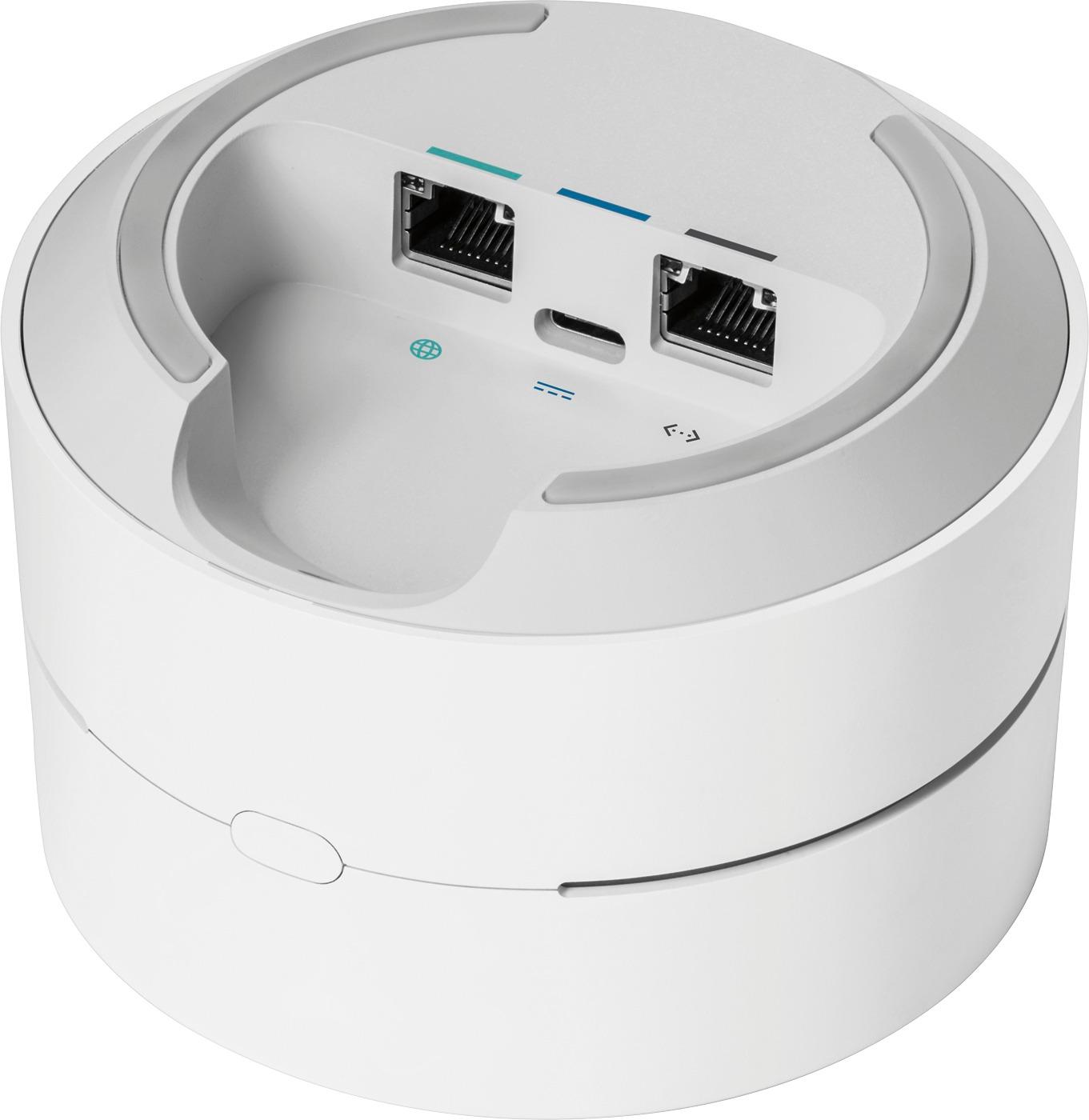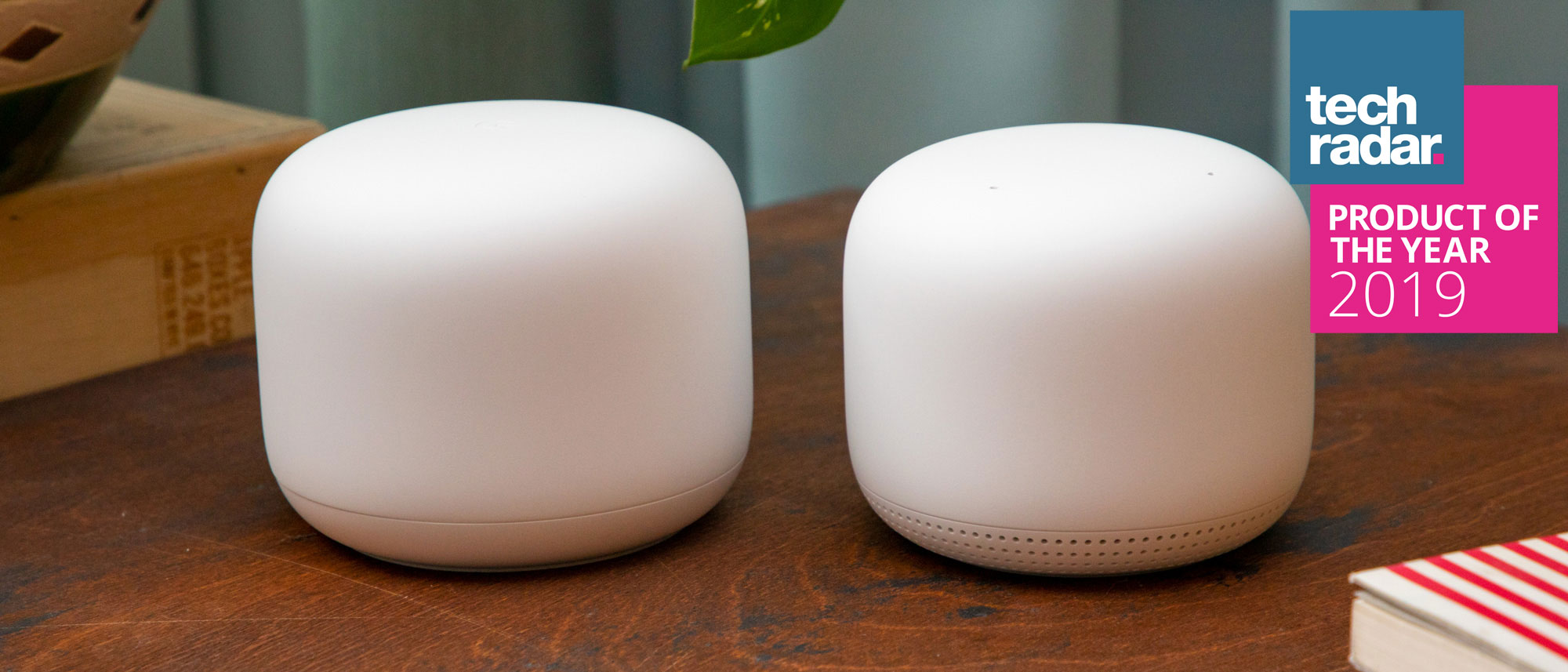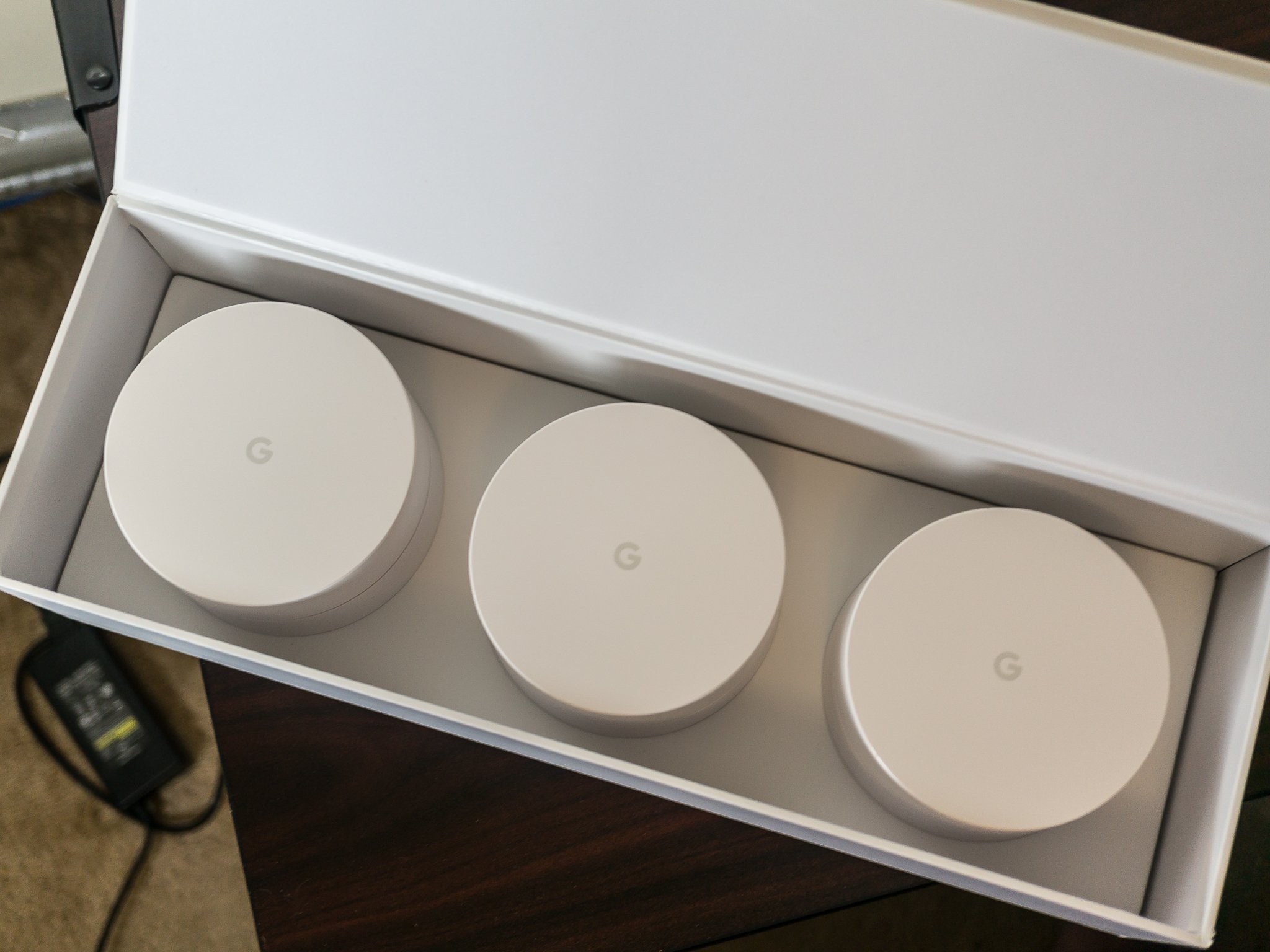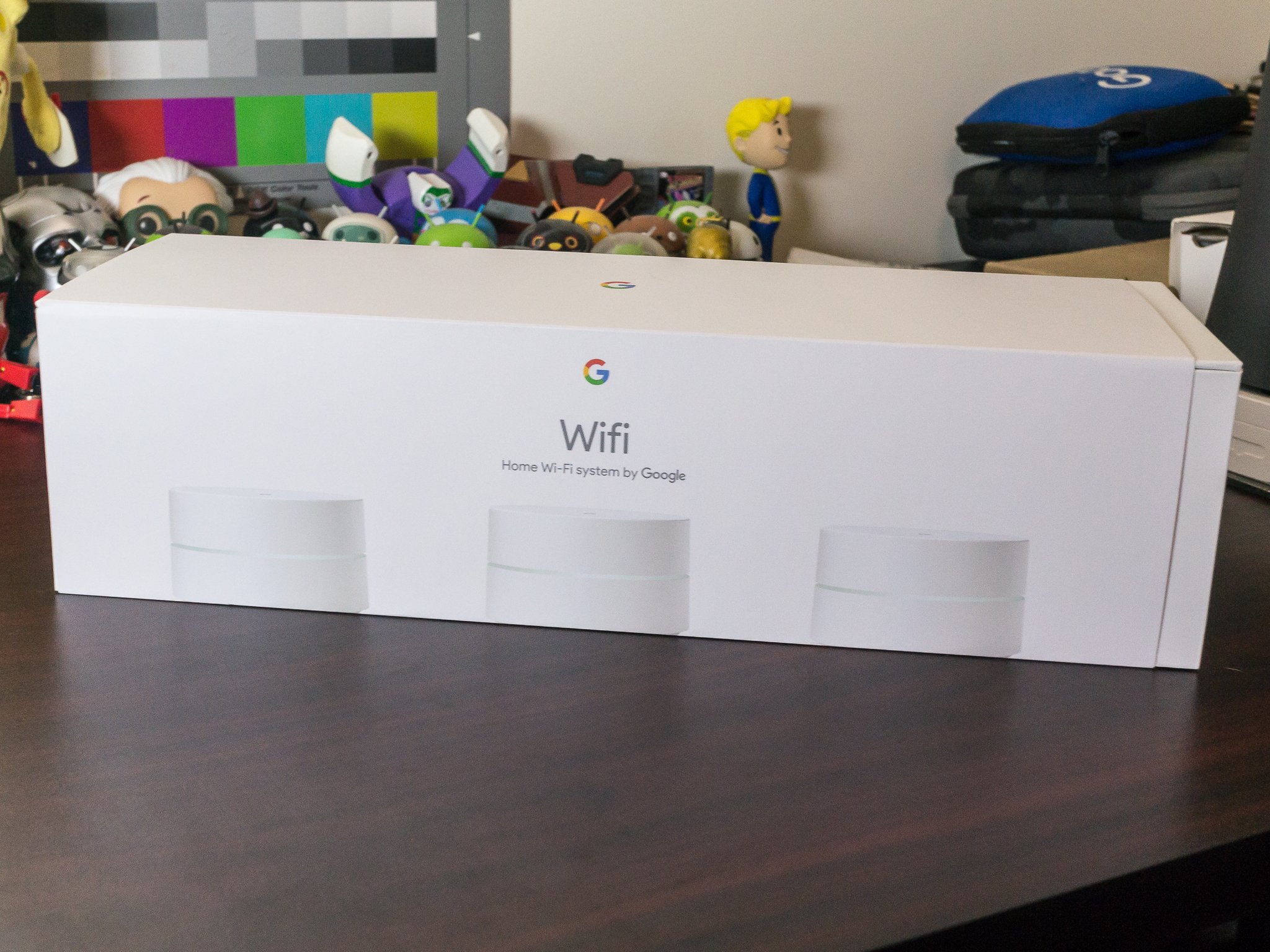Google Wifi Mesh Review

Cons
– is missing USB ports
These days, you no longer need to purchase a single router. Google’s Wifi (that is how Google spells it) mesh-router kits are fast, simple, and affordable. They cost less than $200 each for three packs.
For Google Wifi to be effective, however, it will require multiple units. The ranges of individual Google Wifi units is shorter than that of other mesh-router systems. These units will require a Google account and either a tablet (or a smartphone) to set them up.
Are you looking for a more spacious home? Compare the top Wi-Fi mesh systems. Google Wifi can be preferred over Eero and Luma, which offer similar features but are much more expensive. However, the cost of the Netgear Orbi is not a problem if you don’t mind paying an additional $100.
Editor’s Comment: Google Wifi 2.0 was released in 2020. Although it features identical hardware and performance the power connector (now USB-C) was switched to a barrel connector. Prices per unit are also lower. The overall Google Wifi recommendations are the same for both versions and have not changed since April 2017, when this review was first published.

Google Nest WiFi: Continue to Agree
All smart devices now require you to accept a set of terms before you are able to use them. Unfortunately, we are not able to go through and review every agreement. However, when we were reviewing them we noticed that these agreements weren’t easy for most people to understand.
Google Accounts required by the Nest Wifi. This account comes with its own terms and privacy policy. In addition, the Nest Wifi’s cloud services will collect various information about your home network and devices and surrounding Wi-Fi networks. Google collects data based upon your device and usage as well as details about the use of Google Home, Google Wifi and other apps. It is possible to opt out from these stat and cloud services.
The Nest Wifi can create a voice model based on audio clips that you provide to it. While the voice model may be saved locally, it can “temporarily send to Google” for identification.
Final count: 1 required agreement plus 4 optional agreements.
As mentioned, the Nest Wifi doesn’t have a dedicated wireless backhaul band, instead relying on a traditional 2.4GHz and 5GHz dual-band system for both connections between the router and points as well as connections to devices. Sanjay Noronha of Google Nest says they chose this strategy because they can effectively manage traffic using software. Also, there is no need for additional complexity and hardware cost. According to my experience, devices connecting to mesh points far away from the main router have faster speed with dedicated backhaul bands.
Nest Wifi, however, does not support Wi Fi 6 Protocol. This is a protocol that provides more efficient connections to Wi Fi 6 enabled devices. Noronha said that Wi Fi 6 support at this stage would have been costly to the system and provided little benefit for most customers.
To set up Nest Wifi, you will need a Google Account and the new Google Home app on iOS or Android. It will guide you through setting up the router, creating a Wi-Fi network password and placing it in the best place in your house. You can run speed tests through it, see how many devices are connected to the network and prioritize specific ones, create a guest network, and schedule Wi-Fi breaks for kids’ devices on the network. A device can be used to ban adult content.

Google Wifi Mesh System Review – Is it Still Worth It in 2020?
Google WiFi is still considered the best dual band WiFi system. A review of it from a year ago showed that not much had changed. Google holds a bigger share in an extremely competitive marketplace for networking. Google Nest WiFi was released, though it is true that there has been a Google Nest WiFi successor. However, popularity seems to be still high for the original mesh system. Google’s first product in networking was the Google OnHub. It consisted of two separate devices that were built with TP-Link and Asus. However, despite their big names, they didn’t really outperform other products.
With its Google WiFi device, which was designed and functionally challenging the existing mesh systems of Ubiquiti, Luma, or Eero, things have changed significantly. Linksys and Netgear also ‘intervened” with their own wireless networks (against the possibility of losing influence), and brought us the Velop (and the Orbi), both tri-band WiFi system that delivered an amazing wireless performance. Google, however, has one major drawback that other manufacturers don’t have: the fear among people that Google will use their personal data without any restrictions. As with Microsoft and Facebook both, Google has grown too big, and it has a long history of violating user privacy. This is why people have a tendency to be skeptical of any company that makes products.
Update: After three years passed, I thought it was worth revisiting the Google WiFi system to determine if its appeal is still relevant in 2020. It’s also worth mentioning that the manufacturer has released the Google Nest WiFi which tries to replace the older Google WiFi.
Google WiFi can come as either a single unit, or as a 3-units kit. Each device is identical. This feature is common to all wireless mesh systems. Linksys Velop the Netgear Orbi used large but minimalistic units. Google WiFi went the opposite route and designed smaller devices that could be placed in any room of the home. A single Google WiFi router (also called Point) features a small white cylindrical case, covered by a white matte finish and with a narrow canal halving the body horizontally in two pieces to make way for the LED indicator.
Each Google WiFi point feels solid and well-built, although there isn’t much to indicate that it’s a network device. That’s right, the Google WiFi isn’t much larger than a face cream recipient (and you could easily mistake it for one), measuring no more than 4.17 x 2.70 inches and weighing about 12 ounces. This lightweight device is not normally considered stable. However, it’s lighter than the Linksys Velop Netgear Orbi, and so you’re less likely to hit any of them.
There are some aspects (or lack thereof) that I think could cause some concern. I did not see any ventilation holes or cuts to signify proper airflow. Google WiFi routers are prone to overheating. Since these type of devices often rely on passive cooling, it is very important to allow the heat to dissipate (usually, through vent grills or holes) and so far, I have noticed that the units get slightly warm while plugged in, but they didn’t overheated so far (that could change with age).

Starry Station
Read Our Starry Station Review. The Wifi point pucks are matte white and measure 4.1 in diameter by 2.7 in high. They are slightly taller than the Eero (1.3 inches) or Luma (1.1 inches) modules but have a lower profile (8.8 ins) so they will fit well into most décor. Wifi will be seen. This contrasts with traditional networking gear like the Google Home ($99.99 on PCMag Shop). The LED strip that is embedded at the center of every Wifi point emits light when all is well, glows amber when there’s an interruption in Internet connectivity, and pulses blue when setup is complete. The base has two gigabit LAN ports and a power port; the main Wi-Fi point (the one directly connected to your modem) uses one port as a WAN (Internet) port and the other as a LAN port that can connect to devices like desktops, gaming consoles, and home automation hubs, while both ports on the additional points act as dual LAN ports. Wifi point lacks USB connectivity. You can not attach peripherals like printers and external storage drives.
Each point uses a quad-core Arm CPU and 512MB of RAM. There is also 4GB of eMMC Flash memory. Every point also has AC1200 (2X2) 802.11ac circuitry and 802.11s(mesh) circuitry, as well as a Bluetooth radio. Google Wifi allows beamforming as well as WPA2-PSK Security. As is the case for other Wi-Fi networks, embedded software called Network Assist uses Wi-Fi to guide clients to the least congested channel, most popular radio station, or closest Wi-Fi connection. Google Wifi is similar to the Luma/Eero/Orbi systems. It presents both the 5GHz (2.4GHz) and 5GHz bands in one band.
It is easy to install and manage the system using Google’s free Android mobile app. It opens to a home screen that tells you the status of your network (online/offline) and how many devices are connected, and displays a simple network map. You can tap on any WiFi point to display information, including the IP address, total upload/download stats, and the MAC adress. A three-bar symbol in the upper corner will take you to an area where you can add additional Wifi point, provide feedback and receive online support.
Three icons are located just above the map. The Info button is located to the left. It displays the status of Wifi point connectivity. This will guide you through the process such as setting up Guest Networking or Family Wi-Fi and how to adjust the LED brightness. You can also address any problems you might have with connected clients and satellites. You can return to your home screen by clicking the round Internet icon at the middle. The four-dot icon to the right will take you to Shortcuts or Settings. The Network Check shortcut allows you test the speed of your Wi-Fi signals and your Web speed to mobile devices. Priority Device lets you give priority traffic to all connected devices for 1 to 2 hours. If you forget your password, there’s a Show Password shortcut. Internet Pause buttons can be used for clients that are Family Wi Fi clients.
Family WiFi allows you to immediately suspend internet access for certain wireless clients. Tap Family Wi-Fi in the Settings menu. Select a client and assign it a group label if necessary. Simply tap the group label, or an individual device, to pause Internet connection. Just tap the button to resume. To restart your WIFI points or perform a factory reboot, you can also update firmware via the Network settings menu. Advanced network settings let you use either an ISP-mandated DNS or an automatic DNS. Enable DHCP and create Port Forwarding rules. Finally, choose a Network mode (Bridge, Standard). For example, in Standard mode the system is acting as a single network, providing Wi-Fi coverage and assigning IP addresses. Bridge mode means that the points serve as an extension of an existing network but doesn’t possess DHCP server capabilities.
These advanced settings are not available with Eero or Luma systems. However, both Orbi and Amplifi HD offer comparable settings. However, high-end routers like the D-Link AC5300 ultra Wi-Fi Router, (DIR-895L/R), offer more control. You can configure firewall settings and virtual server settings as well as wireless transmission power levels. In the event of neighborly interference, you can choose a wireless channel or change the channel width.

Performance
Google Wifi 2016 and 2020 models both have AC1200 routers. (Check our Wifi Guide for more information) They support speeds of 300Mbps and 867Mbps respectively on the 2.4Ghz and 5Ghz channels. Although each point has its own capacity, some will communicate back to the router using the bandwidth.
It sounds slow when compared with other routers, mesh products included, but in reality it is more complex than this. I already mentioned that if the speed of your ISP’s internet is lower than that, you won’t be able to notice. Most likely, heavy traffic devices will be using the 5Ghz bandwidth. In this case, you should have no problems with 500Mbps or more.
You can see that I am very busy writing about technology and connected products. I currently have 53 WiFi devices connected ranging from smartphone and tablets, to streaming boxes, smart lights, hubs, switches and security cameras. We will often be streaming video or music on multiple devices at once, as well as having security cameras recording events to the cloud at any time.
These were issues that I had before Google Wifi. Problems with signal strength, allocation of addresses, router freeze-ups, and routing problems were all constants. Three years ago, I put in Google Wifi and haven’t had to think about it once. It works flawlessly every time. No drop outs, no buffering, no restarts. This is where I can’t emphasize enough that raw speed is not the overriding factor for a good WiFi experience.
One of the most common complaints I hear from customers when reviewing smart-home products is that they only support 2.4Ghz and can’t set it up on their network. To get it working, support from these companies often tells customers that they will need to disable their 5Ghz channels. Because their router doesn’t select the correct frequency band it is a problem of implementation. And it is amazing just how frequent this happens, even on high-end routers.
Google Wifi is free from this problem ….EVER. Without any issues it correctly selects the appropriate channel for every device. It also seamlessly transfers devices from one room to another, which can cause problems with other products. It is the product that earned “It just Works”
Google’s cloud-based service is a great help. Google’s cloud service isn’t logging your network traffic, as you may think. Instead, Google monitors what each device uses the network for, when and what type. It does this by dynamically adjusting and prioritizing traffic to maximize performance.

Google Wi-Fi
Rui Yang / Lifewire We bought Google Wifi to allow our expert reviewer to thoroughly evaluate it. Keep reading for our full product review.
The top wireless routers are a combination of convenience, performance, and value. That’s how we see it. Google’s mesh router integrates all these elements and delivers the Google Wifi wireless router. It is affordable, stylish, and performs well with other mesh routers. It can be set up quickly and forgotten about, thanks to the user-friendly Google Wifi App.
We spent a long time using Google Wifi in our apartment evaluating its design, ease of setup, connectivity, and software.

Featured
Thanksgiving alert! These hackers work holidays ZDNet’s Black Friday Buyer Guide 2021 Microsoft releases a free virtual device for you to download Pixel 6’s broken hardware. Google’s support for tech issues is poor. This review does not reflect that. This review is almost entirely subjective. In this review, I contrast the Synology RT2600ac MR2200acGoogle Wii in my difficult house.
The Synology RT2600ac is an AC2600 4×4 quad stream router . This router is part of the router class which currently includes Wi-Fi routers that are fast, but not necessarily fastest. CNET reviewed the RT2600ac when it launched. It was at the forefront of Wi-Fi router speed. Two years on, the RT2600ac still receives high marks for its speed. But there’s more to the RT2600ac. We’ll get to that later.
I believe the Synology MMR2200ac to be where magic happens. The MR2200ac, a mesh router. You could just buy an MR2200ac and use that as your only Wi-Fi router, but if you combine a few MR2200ac devices with an RT2600ac, it can transform the Wi-Fi in your home or office by creating a seamless, always-available mesh of solid Wi-Fi coverage.
Google Wifi promised the same. There were two options: buy a few Google Wifi sticks or, as I did (and can still do), the Asus OnHub with Google Wifi compatibility and then add some Google Wifi pucks to create a mesh system.
You are right. It is easy to become confused. Keep following me. You’ll see the benefits of this method very quickly.
.Google Wifi Mesh Review
